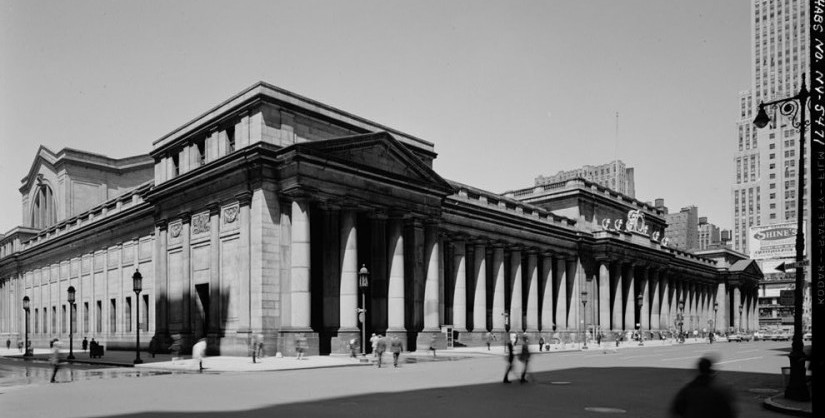
Irving Mitchell Felt
Irving Mitchell Felt oversaw the relocation of Madison Square Garden to the site of the historic Pennsylvania Station, resulting in the demolition of the original building.
Irving Mitchell Felt, a New York City native, was born on January 25, 1910. He was raised on 140th Street in Manhattan. Felt graduated from the Wharton School of Finance of the University of Pennsylvania at the young age of 19. Soon after graduating, he joined Wall Street’s Hayden Stone but then moved to the investment firm of Graham Paige, where he truly left his mark.
Felt quickly became the president of Graham Paige, and helped the firm gain control of Madison Square Garden. He chose to relocate the Garden to West 33rd Street and Seventh Avenue, opting to demolish McKim, Mead, & White’s Pennsylvania Station to do so.
Felt went on to become the chairman of his own organization, the Felt Foundation. He was also a board member of several New York City institutions, including the Metropolitan Opera and the Lincoln Center for the Performing Arts. Felt passed away on Thursday September 22, 1994.1
Felt Foundation
Chairman
Federation of Jewish Philanthropies
President
Jewish Childcare Association of New York
President
Joffrey Ballet
National Trustee
Lincoln Center for the Performing Arts
Founding Patron
Metropolitan Opera Association
Member, Board of Directors
Felt accepted an offer from the Pennsylvania Railroad for the rights to relocate Madison Square Garden above Penn Station in November of 1960.2 The new Madison Square Garden that was built over the site opened at its new location at West 33rd Street and Seventh Avenue on February 11, 1968.3
Penn Station's announcement of demolition served as a wake-up call for many New Yorkers that their City's architectural history was in danger of being forgotten. And though news of the planned demolition did not trigger immediate public outcry, it eventually spurred many into action, including Mayor Wagner. In the months that surrounded the demolition, he appointed the Committee for the Preservation of Structures of Historic and Esthetic Importance (later renamed the New York City Landmarks Preservation Commission). And in the wake of the demolition, the Committee received many letters from individuals and organizations, calling for preservation of historic buildings in their neighborhoods.4
Irving Mitchell Felt oversaw the relocation project of Madison Square Garden for eight years, from its initial conception to its opening. He took pride in the fact that it was privately financed, in an era where most major developments were receiving financial help from government institutions.5
Madison Square Garden's relocation called for the demolition of the original Pennsylvania Station, located at West 33rd Street and Seventh Avenue. The original structure was designed by McKim, Mead & White and erected in January of 1910. It was designed in a Beaux-Arts style and boasted carriage-ways, a large concourse, and high ceilings. It was an architectural treasure of New York City. Felt called for the demolition of Penn Station on July 25, 1961.6
Many architects and preservationists tried to save Penn Station. A ground of five architects came together to form the Action Group for Better Architecture in New York (AGBANY). AGBANY was able to assemble a coalition of 175 members, but it proved to be unsuccessful.7
Penn Station's demolition was a great loss to New York preservationists. Many activists, including James Grote Van Derpool, the executive director of the Landmarks Preservation Commission, felt they had failed to call enough New Yorkers to action to save the station.
- Oral History with Norval White
- New York Preservation Archive Project
174 East 80th Street
New York, NY 10075
Tel: (212) 988-8379
Email: info@nypap.org
- Agis Salpukas, “Irving Felt, 84, Sports Impresario, is Dead,” The New York Times, 24 September 1994.
- Ibid.
- Matthew McAllester, “Irving M. Felt, 84, Headed Madison Square Garden,” Newsday, 24 September 1994.
- Anthony C. Wood, Preserving New York: Winning the Right to Protect a City’s Landmarks (New York: Routledge, 2008), page 280.
- Agis Salpukas, “Irving Felt, 84, Sports Impresario, is Dead,” The New York Times, 24 September 1994.
- “Penn Station,” New York Architecture. Article retrieved 12 March 2016